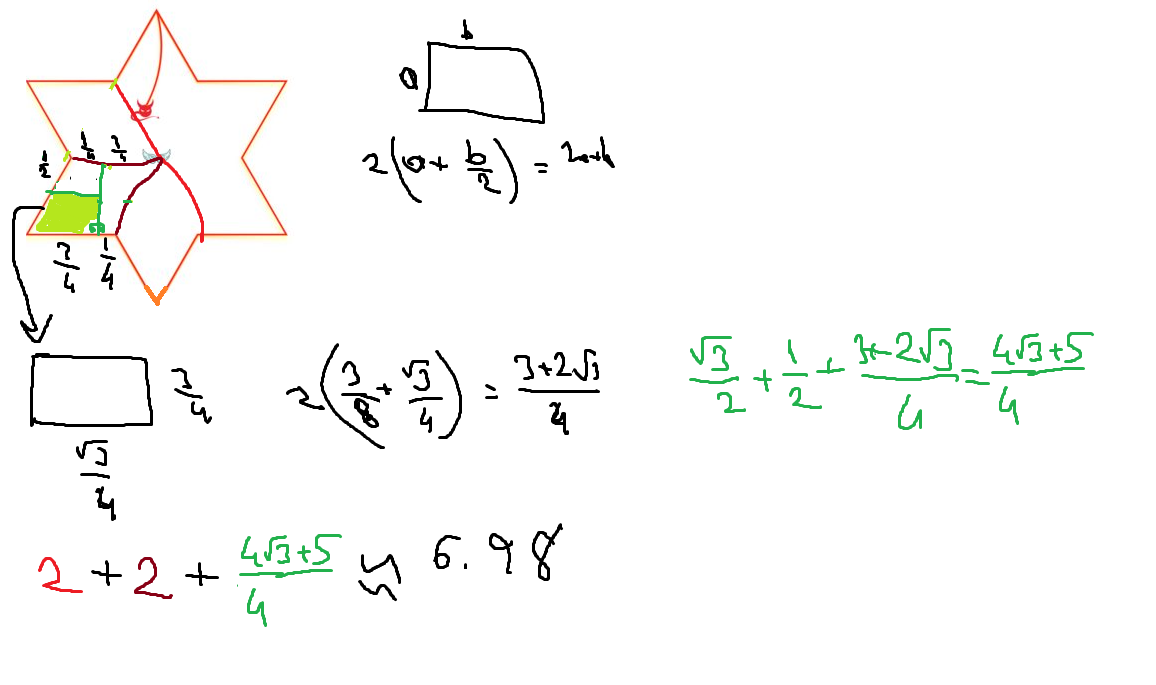The devil has trapped the angel in a regular hexagram of firewalls. The perimeter of the hexagram is 12.
The devil
- starts at the apex of the hexagram.
- can move at speed $1$ to leave a trajectory of firewall behind, as this
- can teleport from one point to another along the firewall.
The angel
- can teleport to any point that is not completely separated by firewalls from her current position.
The devil catches the angel if their distance is $0$.
Find a plan for the devil to catch the angel in less than 7 units of time. The less time your plan takes, the better.








